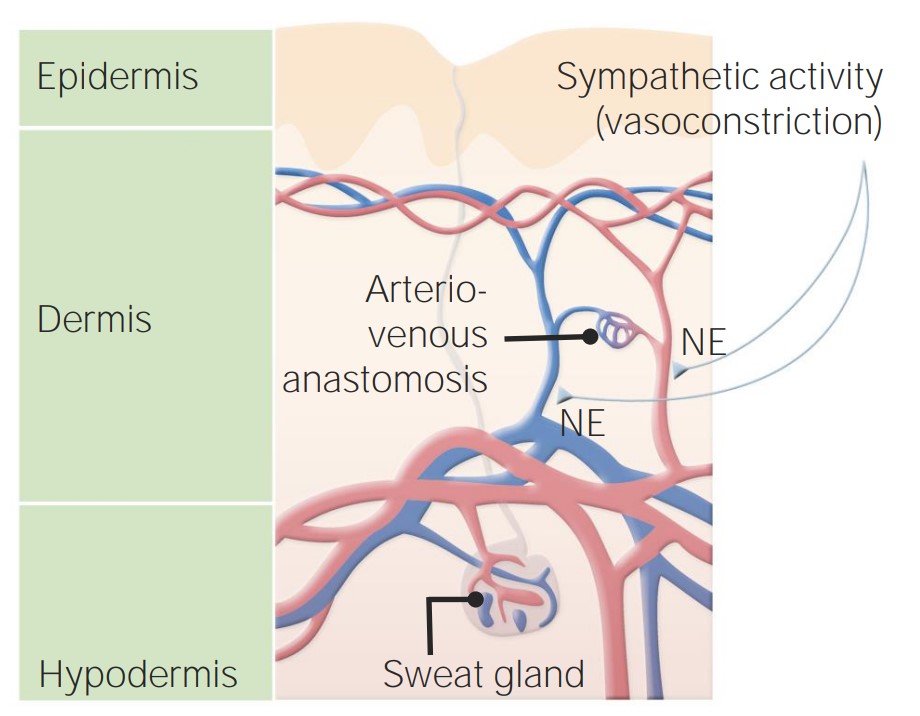Playlist
Show Playlist
Hide Playlist
Coronary Circulation – Special Circulations
-
Slides SpecialCirculations VascularPhysiology.pdf
-
Download Lecture Overview
00:00 As we move on to the coronary circulation, here we need to think about relaxing and contraction of muscles. So the heart is a muscle, it has myocytes. So where are we going to get blood flow when a muscle contracts or relaxes? This is a great example of how this process works. If we look at the pressure in the aorta, which is blood pressure that's going into the systemic circulation. Systole is the part where you have the highest blood pressure. You notice though when it has the highest blood pressure, blood flow which is the second row here, is the lowest. So when the heart is contracting, it is not getting blood flow. Only when the heart relaxes does it get blood flow. So this sets up a very unique process where during the contraction of the heart, the heart receives very little of the blood flow it's delivering to the rest of the body. Only when it relaxes does it obtain the flow necessary for it to exchange nutrients. This process becomes important especially when you think about how much work the heart has to do. It's beating 60 to 100 times every minute every hour of every day. Every time it beats, it loses blood flow during the contraction phase. How this process works is that any time there is squeezing of the cardiac muscle, it pushes together some of the very small blood vessels. Therefore, only during the relaxation phase do those blood vessels open up and engorge the particular coronary myocytes with blood and this increase in blood flow can be quite dramatic as we saw in the previous graph. What controls the blood flow besides contraction? For this, you need to think about other muscles and how the regular circulation is controlled. It's usually controlled by the sympathetic nervous system; however, contracting muscles control their own blood flow. This is done through this reactive hyperemia that is as well as an active hyperemia that's due to local vasodilatory molecules. Things like adenosine and so forth will override the sympathetic nervous systems trying to constrict blood flow to the area. Because in general, remember, the sympathetic nervous system is trying to vasoconstrict and only lets that local tissue dilate in response to its own needs, i.e. that's increase in metabolism. This sets up a principle in which local control overrides the sympathetic control and we call that functional sympatholysis. The coronary circulation is really developed increasing based upon the amount of work it does and the one molecule that you really want to have in mind is adenosine. Adenosine will be the primary molecule that will cause vasodilation of the local coronary vessels. So even though you have this local control, you can never forget about autoregulation. So autoregulation will still try to regulate blood flow across the wide range of perfusion pressures just like it did in the brain. So you have factors that are in place to try to help the heart have an optimal blood flow. Hopefully you've been able to appreciate throughout these system courses is that there's certain organ systems you might want to think of as being a little bit more important. I hate to say that, just a little bit more important, one system than another. Things like the heart, things like the brain, things like the kidney need to maintain optimal amount of blood flow. They are more important than maybe the blood flow that goes to your big toe.
About the Lecture
The lecture Coronary Circulation – Special Circulations by Thad Wilson, PhD is from the course Vascular Physiology.
Included Quiz Questions
What is it called when local control overrides sympathetic vasoconstriction?
- Functional sympatholysis.
- Forced vasodilation.
- Forced vasoconstriction.
- Reactive hyperemia.
Which of the following will cause local coronary vessel dilation?
- Adenosine
- Carbon dioxide
- Carbon monoxide
- Sodium
- Lactic acid
Which of the following are paired correctly?
- Diastole - increased coronary blood flow
- Systole - increased coronary blood flow
- Diastole - increased systemic blood flow
- Systole- decreased systemic blood flow
- Ventricular relaxation - decrease coronary blood flow
Customer reviews
5,0 of 5 stars
| 5 Stars |
|
1 |
| 4 Stars |
|
0 |
| 3 Stars |
|
0 |
| 2 Stars |
|
0 |
| 1 Star |
|
0 |
like it very much Thad is awesome thanks, donno why noone has rated





